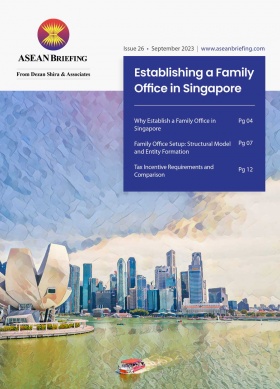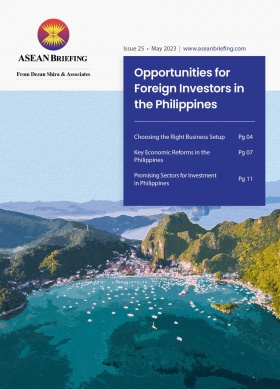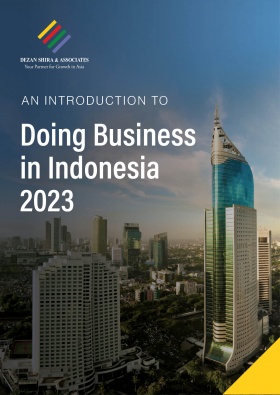Indonesia and Singapore Implement QR Linkage Payment
On November 17, 2023, Indonesia and Singapore officially launched their cross-border quick response (QR) payment linkage, enabling consumers and businesses to conduct cross-border transactions instantly.
The cooperation between Bank Indonesia and Singapore’s Monetary Authority of Singapore aims to promote greater integration of Indonesia and Singapore’s digital economy. Indonesian consumers This initiative is in line with the ASEAN Agreement on Economic Commerce, which provides a set of rules to govern cross-border e-commerce in the Southeast Asian bloc in addition to paving the way towards a regionally integrated digital economy. An important pillar of the agreement is the facilitation and easing of cross-border payments.
Further, the QR payment linkage will also benefit the large number of travelers that visit each country. In the first half of 2023, an estimated 1.1 million Indonesian travelers to Singapore and 600,000 arrivals from Singapore to Indonesia.
How QR payments can strengthen Southeast Asia’s MSMEs
QR codes can encourage Southeast Asia’s micro, small, and medium-sized enterprises (MSMEs) to adopt cashless payment options, particularly since most MSMEs are in the informal sector and are either unbanked or underbanked. An estimated 50 percent (approx. 300 million people) of the region’s population are unbanked and a further 24 percent are estimated to be underbanked.
Financial inclusion varies among Southeast Asian countries. Singapore is one of the most financially inclusive countries in the world whereas some 70 percent of Vietnam’s population is unbanked. For the Philippines, it is 65 percent, and for Indonesia, it is 50 percent.ASEAN aims to create seamless cross-border payments between member states under the ASEAN Payments Policy Framework (APPF), by harmonizing and modernizing payment infrastructures. This will enable ASEAN to ensure that regulatory frameworks can safeguard the service users’ interest, while also promoting innovation and investments in information and technology (ICT) in the region.
Despite the lack of uniform regulations and economic disparities between ASEAN states, market forces driven by consumer and business demands will propel the bloc toward realizing a multi-country real-time network.
The bloc is trying to emulate the European Union’s (EU) Single European Payments Area (SEPA)-style payments network. The system was introduced for credit transfers in 2008 before being fully implemented in the Euro area by 2014. The pace of SEPA’s development was assisted by the fact that participating countries were already members of the EU and used the same currency — the Euro.
Barriers to financial inclusion in Southeast Asia
Cash is King
As most Southeast Asian MSMEs are in the informal sector, they pay wages in cash, especially in rural and low-income communities. Without bank account records, many Southeast Asian MSME firms and their employees do not have credit histories, which hinders their ability to access financial services, such as business loans or mortgages.
Financial literacy
Low levels of financial literacy are impacting the low adoption rate of financial services in Southeast Asia. Financial literacy is around 30 percent of the region’s adult population – lower than the global average.
Boosting financial inclusion
The importance of mobile phones
More people in Southeast Asia have a mobile/cell phone than a bank account. The mobile phone is thus key to achieving financial inclusion in the region as it enables users to access mobile wallets, which are linked to QR codes.
Some of the most used digital wallets in Southeast Asia are GrabPay, GoPay, OVO, MoMo, and PayFazz. Through these digital wallets, consumers can conduct online transactions without having a bank account. Moreover, as more consumers and businesses use these digital wallets, more data gets generated around their financial behavior and consumer trends. Financial institutions will then be able to tailor the type of financial products offered to this demographic.Foreign investors in the e-wallet industry, must deliver a customer-centric experience to allow customers to pay with the local payment method of their choice, ranging from mobile banking to payments via convenience stores.
P2P lending
Many MSMEs in Southeast Asia have business models that are not compatible with the characteristics of the financial products offered by banks and other financial institutions. That includes aspects such as payment terms for loan schemes, forms of collateral, and credit quality, among others.
Peer-to-peer (P2P) lending is one financing model that has the potential to serve the region’s underbanked and unbanked population. In Indonesia for instance, there are already over 160 officially registered fintech companies that offer P2P lending services, which was valued at over US$7 billion in 2020. These microloans are becoming increasingly popular as they take a short time to be disbursed (less than 24 hours), usually less than US$100. Furthermore, the terms and maturity of the loans are also small and short, being repaid within a few weeks.
About Us
ASEAN Briefing is produced by Dezan Shira & Associates. The firm assists foreign investors throughout Asia and maintains offices throughout ASEAN, including in Singapore, Hanoi, Ho Chi Minh City, and Da Nang in Vietnam, in addition to Jakarta, in Indonesia. We also have partner firms in Malaysia, the Philippines, and Thailand as well as our practices in China and India. Please contact us at asean@dezshira.com or visit our website at www.dezshira.com.







